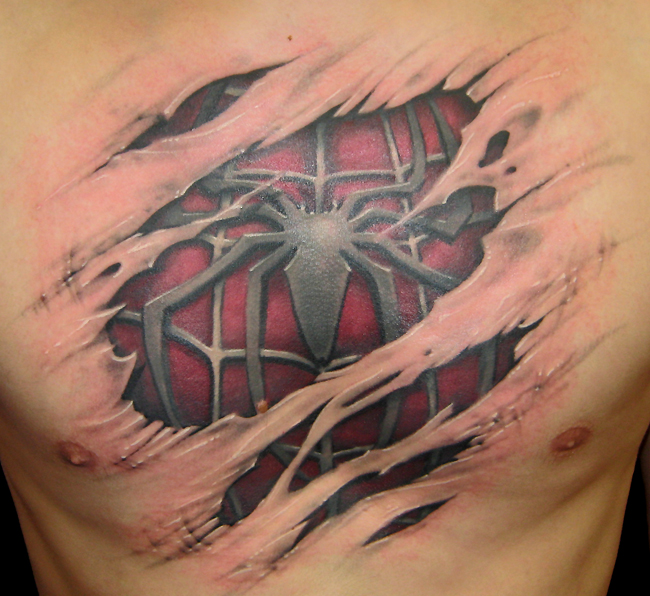Awesome Tattoos: A Deep Dive Into The World Of Body Art
Awesome tattoos have become a significant form of self-expression and art in modern society. From intricate designs to meaningful symbols, tattoos tell individual stories and represent personal beliefs. This article will explore the fascinating world of tattoos, their history, styles, and the cultural significance behind this age-old practice. Whether you're contemplating your first ink or are a tattoo enthusiast, you’ll find valuable insights to appreciate the art form even more.
Tattoos can be an extension of one's personality, a tribute to loved ones, or a representation of personal milestones. The diversity in tattoo designs and techniques reflects the creativity and skill of tattoo artists worldwide. As we delve into this world, we will also discuss the considerations one must keep in mind before getting a tattoo, including health and safety aspects.
Join us on this journey through the vibrant universe of tattoos as we break down everything you need to know, from the different styles to aftercare tips and the overall impact of tattoos in today’s culture.
Table of Contents
- 1. History of Tattoos
- 2. Types of Tattoos
- 3. Popular Tattoo Designs
- 4. Cultural Significance of Tattoos
- 5. The Tattooing Process
- 6. Tattoo Aftercare
- 7. Tattoo Trends in 2023
- 8. Conclusion
1. History of Tattoos
The history of tattoos dates back thousands of years, with evidence of tattooed mummies found in various parts of the world. Ancient cultures utilized tattoos for various purposes, including religious rituals, rites of passage, and as symbols of status or identity.
- Ancient Egypt: Egyptians used tattoos as protective symbols and to signify social status.
- Polynesian Culture: Tattoos in this culture were a rite of passage, representing bravery and strength.
- Japanese Irezumi: This traditional tattoo style has deep roots in Japanese culture, often depicting mythical creatures and stories.
2. Types of Tattoos
Tattoo styles have evolved significantly over time, reflecting different cultural backgrounds and artistic techniques. Here are some popular types of tattoos:
Traditional Tattoos
Traditional tattoos often feature bold lines and vibrant colors. They are characterized by iconic images such as anchors, skulls, and roses.
Realistic Tattoos
Realistic tattoos aim to replicate lifelike images, including portraits of people or animals. This style requires a high level of skill and attention to detail.
Watercolor Tattoos
Watercolor tattoos mimic the appearance of watercolor paintings, utilizing bright colors and fluid designs without outlines.
Geometric Tattoos
Geometric tattoos consist of shapes and patterns, often creating intricate designs that can be both minimalist and complex.
3. Popular Tattoo Designs
When it comes to tattoo designs, the options are virtually limitless. Here are some popular tattoo designs that many individuals choose:
- Floral designs, representing beauty and nature.
- Quotes or phrases that hold personal significance.
- Symbols of faith or spirituality, such as crosses or mandalas.
- Animal tattoos, often representing traits associated with the chosen animal.
4. Cultural Significance of Tattoos
Tattoos hold different meanings across cultures. In some societies, they are seen as badges of honor, while in others, they may carry negative connotations. Understanding the cultural context is essential for appreciating the art of tattooing.
Indigenous Cultures
For many indigenous cultures, tattoos are an integral part of identity and heritage. They can signify tribal affiliation, social status, or achievements.
Modern Society
In modern society, tattoos have become more accepted, often viewed as a form of art rather than a taboo. Many celebrities and influencers openly display their tattoos, further normalizing this form of self-expression.
5. The Tattooing Process
Getting a tattoo involves several steps, ensuring a safe and satisfying experience:
- Consultation with the tattoo artist to discuss design and placement.
- Preparation of the skin and design stencil application.
- The tattooing process, where ink is inserted into the skin using a machine.
- Post-tattoo care instructions provided by the artist.
6. Tattoo Aftercare
Proper aftercare is crucial for healing and maintaining the quality of your tattoo. Here are some essential aftercare tips:
- Keep the tattoo clean and moisturized.
- Avoid soaking in water for extended periods.
- Protect the tattoo from direct sunlight.
- Avoid picking at scabs to prevent scarring.
7. Tattoo Trends in 2023
As with all forms of art, tattoo trends evolve over time. In 2023, several trends have emerged:
- Minimalist tattoos with simple lines and small designs.
- Nature-inspired tattoos, including landscapes and floral motifs.
- Collaborative tattoos where artists work together on a single piece.
8. Conclusion
Awesome tattoos serve as a powerful medium of self-expression and cultural storytelling. Understanding the history, types, and significance of tattoos can enhance one’s appreciation for this art form. Whether you’re considering your first tattoo or are a seasoned collector, remember to choose designs that resonate with you personally.
Feel free to leave your thoughts in the comments below or share this article with someone who might be interested in the world of tattoos. For more insights on body art and self-expression, explore our other articles.
Tattoos are more than just ink on skin; they are a reflection of who we are. Embrace the art of tattooing, and let your body tell your story.
Exploring The Life And Career Of Rapper 25: A Journey Through Music And Influence
Kylin Nude: Exploring The Allure And Artistry Of Nude Photography
YourVerveCard.com Application: A Comprehensive Guide


